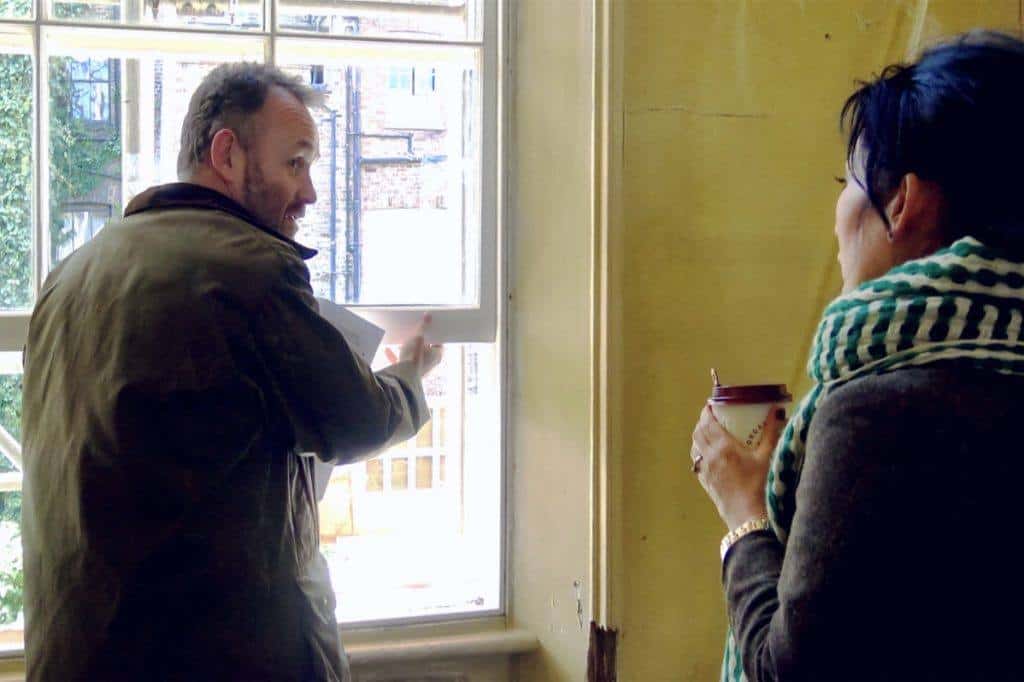BLOG
INTERESTING STUFF
THAT CAUGHT OUR EYE
18 Reasons You Need Pre-Purchase Advice from an Architect

There are signs that the London housing market has been reinvigorated, with many clients old and new contacting us because they want to buy a home with the intent to restore, refurbish or extend it to their tastes and to increase its value.
But buying a property which is incompatible with your plans could result in you being stuck with a home that doesn’t suit your lifestyle or is a wasted investment.
To save you from this heartbreaking scenario, we recommend all potential buyers seek pre-purchase advice from an architect before buying a property so that you are aware of its potential and its risks before making any decisions that you can’t undo.
The benefits of pre-purchase advice
- Neighbour proximity: How close is the house to neighbouring properties? This will place restrictions on how much you can extend the property determine whether you need to prepare a Party Wall Award.
- Planning restrictions: A house in a conservation area will have strict rules specific to that area that govern how its external appearance can be changed, while listed buildings will have restrictions on the fabric of the house, inside and out. Such permissions are typically only granted to reputable architects and may require the services of planning consultants.
- Planning history: Has the house has previously been granted planning permission for works? This may affect the the likelihood of your own planning permission and gives us ammunition in our discussions with planning officers.
- Covenants: There may be legal covenants restricting how you can modify the existing property, for example Crown Estate properties can only be altered if your architect negotiates for a special agreement or if the covenant is overturned through an application to Lands Chamber of the Upper Tribunal.
- Right to Light Law: Depending on the proximity of the neighbouring property and the location of its windows, Right to Light laws (separate from planning permission) may apply to any extension you make. Proceed without being aware of Right to Light and you may find yourself on the wrong side of the law – even if planning permission was granted.
- VAT savings: If the property has been divided into multiple flats, converting them back into a single dwelling could make you eligible for a reduced VAT rate of 5% on the building works if your architect collaborates with a specialist VAT consultant for building works.
- Warning signs: Cracks in the walls could indicate structural issues with the property, movement of the house or subsidence in the soil – all of which could have significant implications on what repair works will have to be carried out.
- Value potential: Analysis of the market and the recent sale prices per square meter for other houses on the street can provide insight into the property’s potential value and the value added by your development plans. We can then tailor your development in such a way to maximise your return on investment.
- Sunlight: The orientation of the house and its windows will have many implications for the interior layout and garden design as certain areas will only receive sunlight at certain times of day. Do you want lovely dawn light during breakfast or a sunset over the dinner table?
- Garden view: A stunning view to the garden when you first enter the front door provides a “wow factor” – if this is missing, can the floor plan be modified to provide one? Would glass walls help to achieve this?
- Flow: If there is poor flow from one room to the next it can significantly impede day-to-day enjoyment and use of the house, requiring a change of the floor plan. If a house doesn’t feel right but you can’t figure out why, a lack of flow is often the reason.
- Structural walls: You need to know where the structural walls are in the house if you plan to change the layout of the house or create new doors. Removing the wrong wall can quite literally result in disaster.
- Trees: Any trees on the site that are within falling distance will need to be reported to planners, and some trees may have Tree Protection Orders which means they cannot be removed without approval, which will require a report from an arboricultural consultant.
- Decoration: If the house is in poor superficial condition (brickwork, render, paintwork, drains etc.) but structurally sound, you could increase its value fairly simply by improving its appearance – an effect known as the “kerb appeal”.
- Damp: An interior that suffers from damp and/or condensation suggests that there is water ingress somewhere in the property which will have to be addressed, which can be costly.
- Flood risk: If the house is in an area with a high water table or in a flood zone it will be more difficult – or impossible – to add basement extensions and you may need to carry out flood risk assessments.
- Services: Depending on the age of the mechanical and electrical services, plumbing, heating and so on, building regulations may require replacement of these services or your plans for the home may not be compatible.
- Utilities: Existing utilities, meters, manholes and drains may not be accessible, in which case works will have to be carried out to relocate them.
At DGA, we offer no-obligation pre-purchase advice for any property in and around London. It’s an opportunity for you to talk to an architect about your plans and get honest feedback on their feasibility before you commit to buying.
